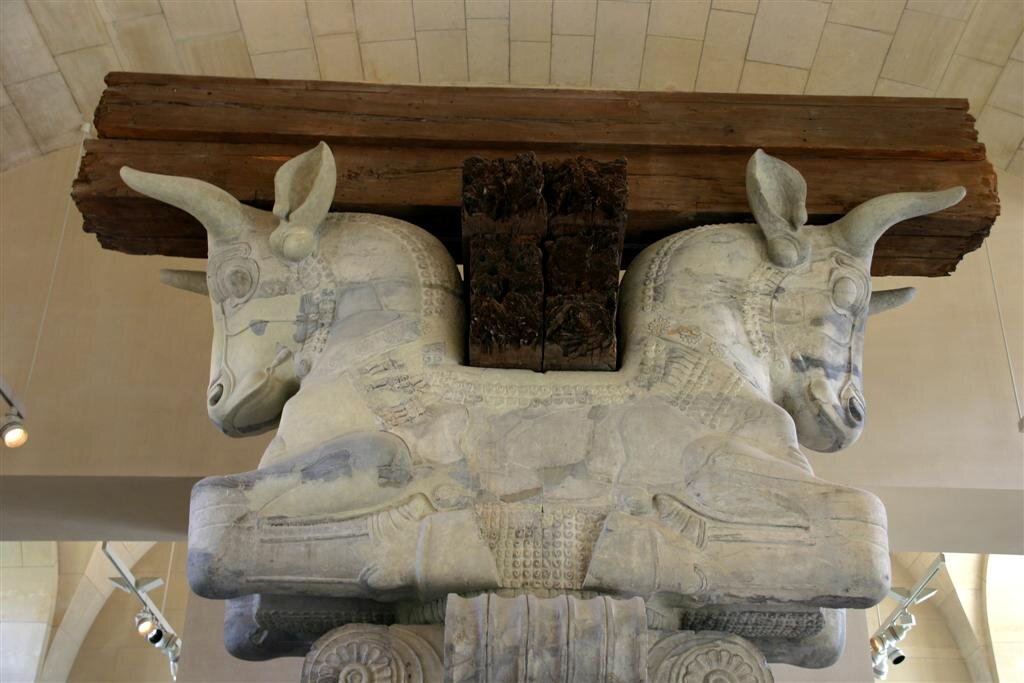INSUBCONTINENT EXCLUSIVE:
TEHRAN- In the midst of the French Revolution, the National Assembly made an ingenious decision: transforming the Louvre into a magnificent
museum, where the grandeur of the nation's masterpieces could be showcased for all to admire.On August 10, 1793, the museum opened its
doors, showcasing a remarkable exhibition of 537 paintings
Yet, the building itself carries a rich history, having been originally constructed as a fortress in the late 12th century.The Louvre houses
a breathtaking collection of artifacts representing a wide array of civilizations and cultures spanning the globe
The museum exhibits an extensive collection of artworks and artifacts from a wide range of nations, encompassing Persia, Egypt, Greece,
range of cultures and spans across different time periods
This includes a remarkable display of Persian art and artifacts, encompassing ancient Persia (known as present-day Iran) all the way to the
Islamic era.These invaluable treasures of Persian art and culture have been steadily procured and incorporated into the museum's
granted visitors the opportunity to admire Persian artifacts
Yet, the presence of these treasures goes beyond celebrating artistry; it serves as a poignant reminder of a tumultuous history marked by
removal and theft that continues to resonate through the ages.These Persian artifacts, cherished symbols of Iran's vibrant heritage, carry
the burden of an unsettling history
Their journey to the Louvre Museum is shrouded in a tale of imperial power and the exploitation of cultural treasures.In times of imbalanced
power dynamics and a lack of respect for cultural ownership, these artifacts found their way into foreign hands, carried off from their
ancestral homeland.The transfer of Iranian antiquities to the Louvre Museum took place over a period of almost 90 years (1885-1979)
During the reign of Naser al-Din Shah many privileges were granted to foreigners
During his reign, the French government obtained the excavation rights for Iranian antiquities, which was the beginning of the extensive and
Nasser al-Din Shah under the supervision of Marcel Dieulafoy
The main goal during this period was simply looting and stealing valuable Iranian antiquities, and no scientific archaeological operations
were carried out.In these excavations, a vast collection of objects and artifacts from the glorious civilization of the Achaemenid Empire at
For the giant pieces, the Dieulafoy group broke down each piece into smaller fragments and then placed them in large wooden crates to be
sent to Paris, in violation of their archaeological excavation agreement with Iranian government
colleague) recounts in her book "Memoirs of the Excavations of Susa" how she managed to bring Iranian antiquities to France using various
In a part of the book, she writes:"Yesterday, I was watching with regret the large stone bull that was recently discovered
It weighs about twelve thousand kilograms! It is impossible to move such a massive object
Finally, I couldn't control my anger, I took a hammer and started hitting the stone bull
As a result of my violent blows, the column split like a ripe fruit."Jacques de Morgan, the second supervisor of the French archaeologists
who came to Iran, was in charge of the second group
He was a mining engineer and familiar with ancient scripts and languages
Unlike Dieulafoy, who was solely focused on looting antiquities, Jacques de Morgan had a greater interest in prehistoric studies and sought
to discover and prove the roots and origins of human civilizations.He managed to obtain exclusive excavation and digging rights in Susa
through diplomatic relations and the efforts of Naser al-Din Shah's personal physician
Then, he built a fortress-like structure in Susa, similar to medieval European castles, to protect his group's discoveries from local
bandits and the curiosity of government officials
In that fortress, he packed his findings in special boxes after initial studies and marking, and sent them to Paris.Jacques de Morgan, who
conducted valuable excavations, eventually resigned from his position in 1908 due to disagreements with other members of the archaeological
group and the directors of the Louvre Museum
He handed over his work to his younger colleague, Ronald de Mecquenem.Mecquenem expanded his range of studies and archaeological excavations
in the Susa region and once again succumbed to the constant temptations of museum curators
He continued the search that the Dieulafoy team had started before.Now, some believe that these artifacts are not merely masterpieces on
display but stolen remnants of a nation's soul
The call for their repatriation serves as a powerful reminder to return these cultural treasures to the land where they were born
This resonates deeply with Iranians who view these artifacts not as commodities but as part of their identity, historical tapestry, and

